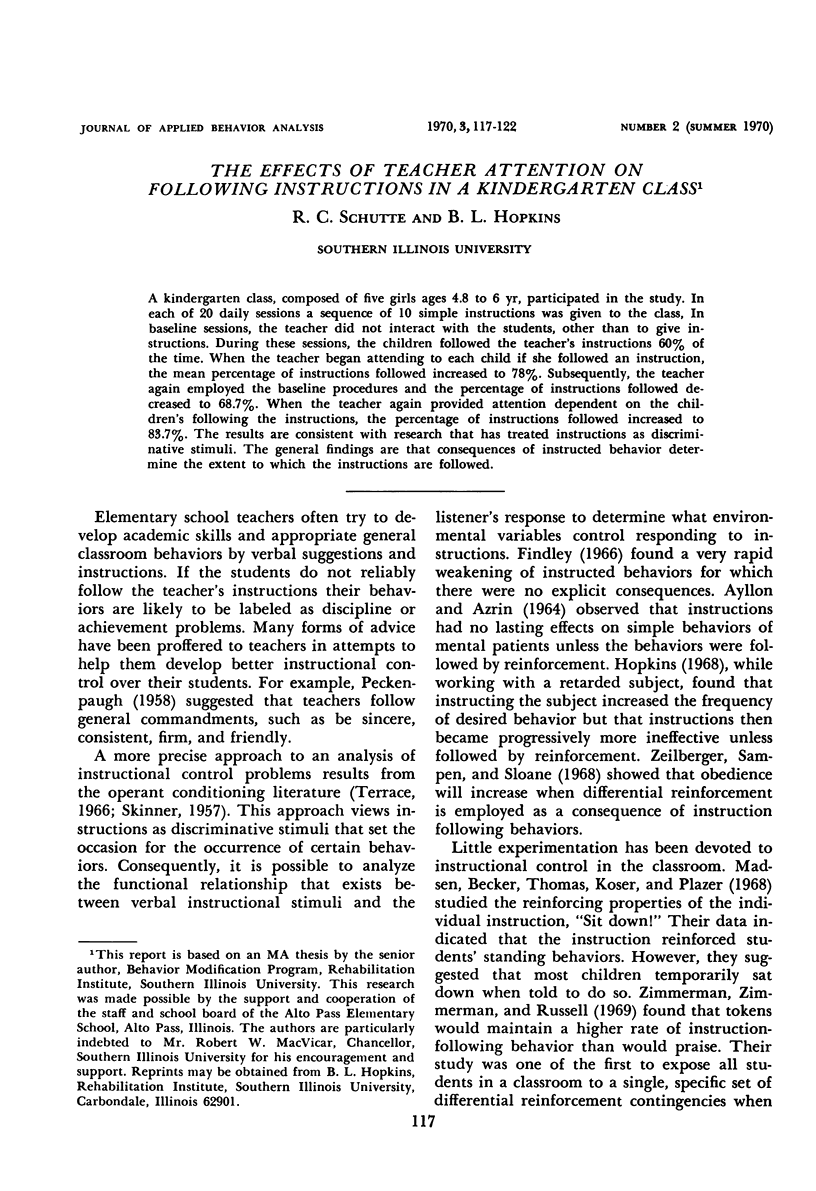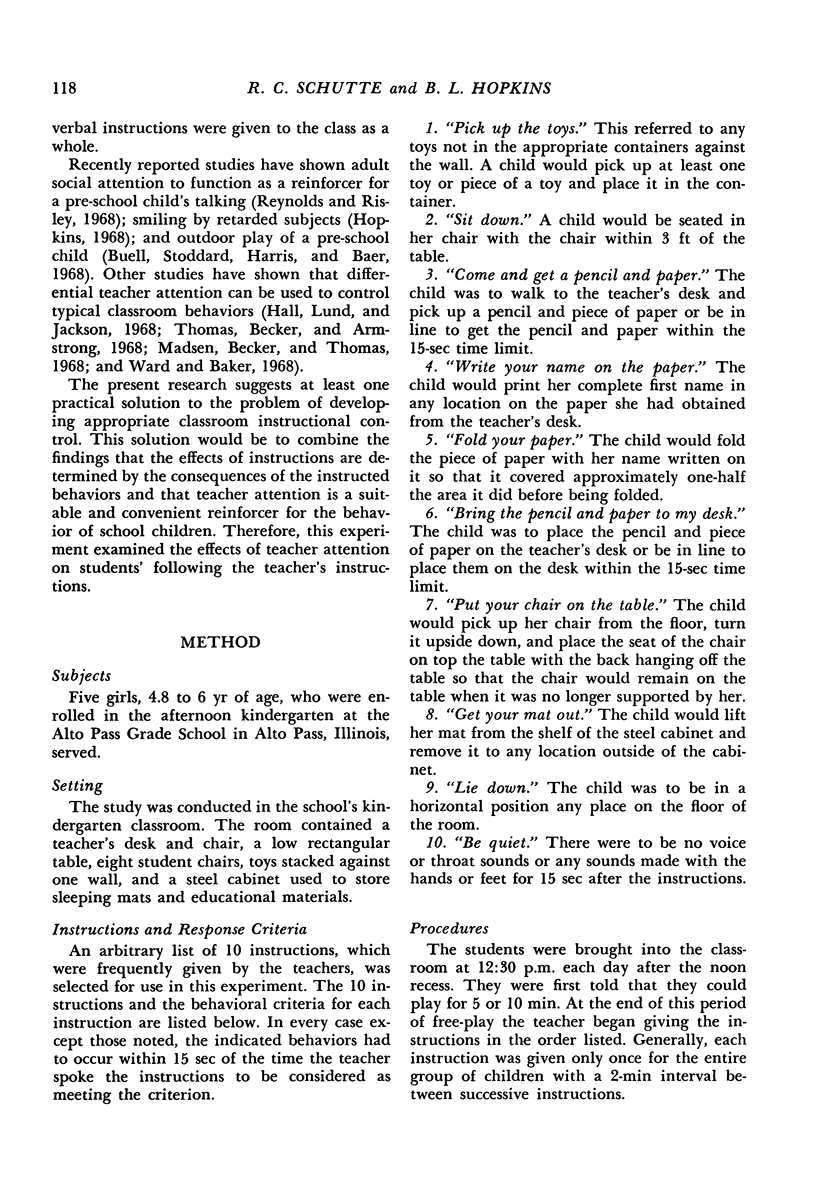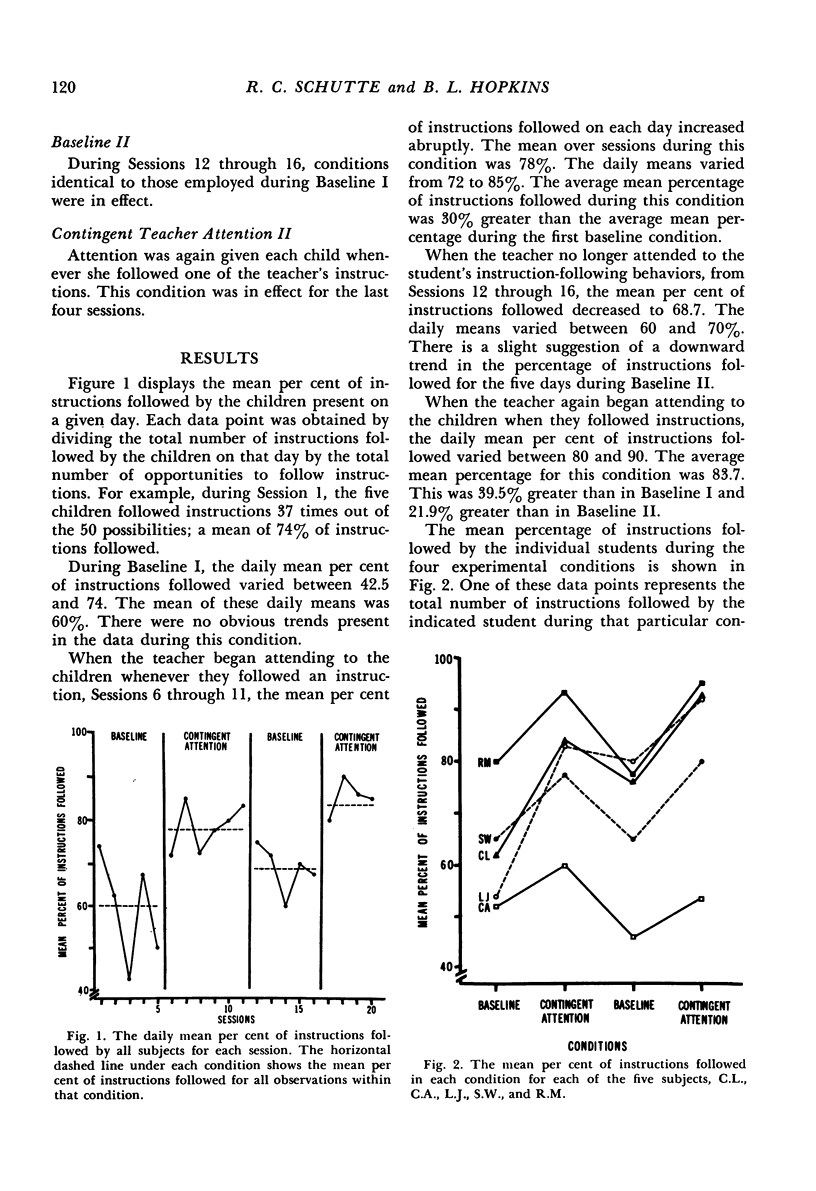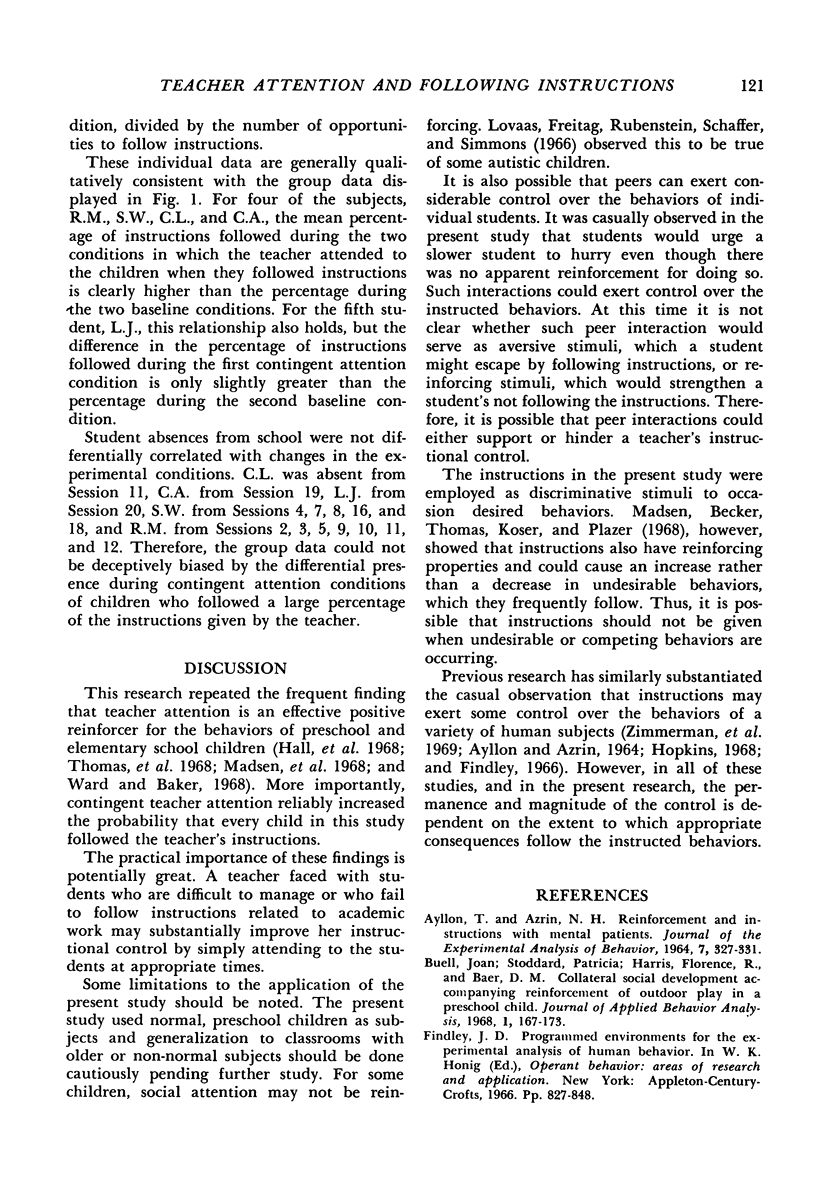Abstract
A kindergarten class, composed of five girls ages 4.8 to 6 yr, participated in the study. In each of 20 daily sessions a sequence of 10 simple instructions was given to the class, In baseline sessions, the teacher did not interact with the students, other than to give instructions. During these sessions, the children followed the teacher's instructions 60% of the time. When the teacher began attending to each child if she followed an instruction, the mean percentage of instructions followed increased to 78%. Subsequently, the teacher again employed the baseline procedures and the percentage of instructions followed decreased to 68.7%. When the teacher again provided attention dependent on the children's following the instructions, the percentage of instructions followed increased to 83.7%. The results are consistent with research that has treated instructions as discriminative stimuli. The general findings are that consequences of instructed behavior determine the extent to which the instructions are followed.
Full text
PDF





Selected References
These references are in PubMed. This may not be the complete list of references from this article.
- AYLLON T., AZRIN N. H. REINFORCEMENT AND INSTRUCTIONS WITH MENTAL PATIENTS. J Exp Anal Behav. 1964 Jul;7:327–331. doi: 10.1901/jeab.1964.7-327. [DOI] [PMC free article] [PubMed] [Google Scholar]
- Buell J. Collateral social development accompanying reinforcement of outdoor play in a preschool child. J Appl Behav Anal. 1968 Summer;1(2):167–173. doi: 10.1901/jaba.1968.1-167. [DOI] [PMC free article] [PubMed] [Google Scholar]
- Hall R. V., Lund D., Jackson D. Effects of teacher attention on study behavior. J Appl Behav Anal. 1968 Spring;1(1):1–12. doi: 10.1901/jaba.1968.1-1. [DOI] [PMC free article] [PubMed] [Google Scholar]
- Hopkins B. L. Effects of candy and social reinforcement, instructions, and reinforcement schedule leaning on the modification and maintenance of smiling. J Appl Behav Anal. 1968 Summer;1(2):121–129. doi: 10.1901/jaba.1968.1-121. [DOI] [PMC free article] [PubMed] [Google Scholar]
- Madsen C. H., Becker W. C., Thomas D. R. Rules, praise, and ignoring: elements of elementary classroom control. J Appl Behav Anal. 1968 Summer;1(2):139–150. doi: 10.1901/jaba.1968.1-139. [DOI] [PMC free article] [PubMed] [Google Scholar]
- Reynolds N. J., Risley T. R. The role of social and material reinforcers in increasing talking of a disadvantaged preschool child. J Appl Behav Anal. 1968 Fall;1(3):253–262. doi: 10.1901/jaba.1968.1-253. [DOI] [PMC free article] [PubMed] [Google Scholar]
- Thomas D. R., Becker W. C., Armstrong M. Production and elimination of disruptive classroom behavior by systematically varying teacher's behavior. J Appl Behav Anal. 1968 Spring;1(1):35–45. doi: 10.1901/jaba.1968.1-35. [DOI] [PMC free article] [PubMed] [Google Scholar]
- Ward M. H., Baker B. L. Reinforcement therapy in the classroom. J Appl Behav Anal. 1968 Winter;1(4):323–328. doi: 10.1901/jaba.1968.1-323. [DOI] [PMC free article] [PubMed] [Google Scholar]
- Zeilberger J., Sampen S. E., Sloane H. N. Modification of a child's problem behaviors in the home with the mother as therapist. J Appl Behav Anal. 1968 Spring;1(1):47–53. doi: 10.1901/jaba.1968.1-47. [DOI] [PMC free article] [PubMed] [Google Scholar]
- Zimmerman E. H., Zimmerman J., Russell C. D. Differential effects of token reinforcement on instruction-following behavior in retarded students instructed as a group. J Appl Behav Anal. 1969 Summer;2(2):101–112. doi: 10.1901/jaba.1969.2-101. [DOI] [PMC free article] [PubMed] [Google Scholar]


